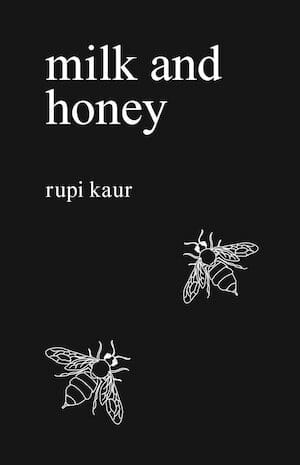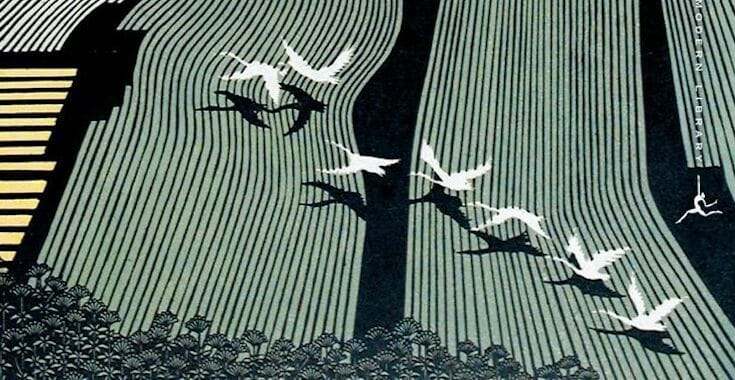Today I’m happy to welcome back self-published author and book marketing guru Dave Chesson. Today Dave has a great lesson on how to draw inspiration for your book cover designs from bestselling books. Enjoy.
by Dave Chesson (@DaveChesson)
Have you ever come across a book cover design so striking that you not only stop and admire it, but also analyze and learn from it?
The best book covers are more than just attractive adornments to the books we love. They also offer ideas and inspiration we can use to guide our own work.
There’s no limit to the vast array of inspirational covers out there. Books of all genres and types have covers that not only please the eye but also inspire the mind.
We’ll now explore the covers of three bestselling books, using their art as a basis for education, inspiration and, of course, appreciation.
Wonder by RJ Palacio

The Book
Wonder by RJ Palacio is a children’s book which has a moving message to match its powerful story.
The book’s main character, 10 year old boy Auggie Pullman, has a facial deformity. After being homeschooled for most of his life, Auggie joins a 5th grade class in school. Wonder tells the story from the perspective of both Auggie and his classmates.
Wonder‘s message of tolerance, compassion, and kindness touched over 6 million readers and was adapted into a critically acclaimed motion picture starring Julia Roberts.
The Artist
Wonder‘s cover was designed by Tad Carpenter, although interestingly RJ Palacio was herself a book cover designer for over two decades before focusing on writing. As a result of her experience as both designer and writer, Palacio was able to provide instructions for the cover which gave the right amount of guidance while still allowing Carpenter to express his own artistry.
The Cover
Wonder‘s cover makes use of a simple three color scheme, using blue, white, and black. The result is simple and easy on the eye.
The main image is an illustration of a slightly out of proportion head, with a single eye. The book title text appears in the shape of an eyebrow.
Both the author name and the book’s tagline appear in a handwritten font at the top and bottom of the cover respectively.
Overall, the cover is appropriate for the children’s book genre. The illustration directly relates to the theme of facial deformity, the use of the single eye relates to the book’s narration from multiple perspectives, and the handwritten style of the cover text is appropriate for the intimate, personal nature of the book.
Your Inspiration
There are many points of inspiration to take from Wonder‘s cover. No matter whether you’re writing a children’s book or not, some of the ways you can apply ideas from Wonder to your own book cover include:
- A carefully chosen three color scheme. Many books feature a vast array of covers, or realistic photography. However, Wonder is an example of how striking and eye catching the classic ‘rule of three’ can be.
- Can you incorporate your book title into your main cover image? Wonder is able to make its title a cohesive part of its main image. You should only do this if it’s a natural fit, as it is here.
- Matching your book cover text to the feel of your book. The handwritten style works well here because of the personal and intimate nature of the story. You should ensure the text on your cover is just as fitting for the written content of your book.
The Wealth Of Nations by Adam Smith

The Book
The Wealth of Nations is a classic and perennially bestselling treatise on macroeconomics from Adam Smith.
The book explores the reason why some nations are wealthier than others, the purpose of using money, and the role of free trade in a nation’s fortunes.
Adam Smith is famous for the economic concept of the ‘invisible hand’. While Wealth of Nations does mention this concept directly, it features more heavily in Smith’s other works.
The Artist
Although The Wealth of Nations has been published with a wide variety of covers over the years, the above example is a result of collaboration between designer Emily Mahon and illustrator Ray Morimura.
Emily Mahon is a graphic designer who has provided art direction for books released by some of the biggest publishers in the industry, such as Harper Collins and the Penguin Group. Her covers have won awards for their striking and unique concepts.
Ray Morimura is a Japanese artist who studied at Tokyo Gakugei University. He is known for producing both classic oil paintings as well as his own style of linocut prints. His work for The Wealth of Nations is an example of his landscape style which he has described as “zen and spiritual.”
The Cover
For The Wealth of Nations‘ cover, Emily Mahon has made ingenious use of white space over the top of Ray Morimura’s beautiful landscape illustration.
While Morimura’s visual art is more of a backdrop than it is anything directly relating to the topic of the book, it does manage to allude to the idea of a nation or place.
The most impressive aspect of this cover is Mahon’s use of white space in the shape of a hand. The hand is poised as if in a holding position. This white space serves as both an allusion to the concept of ‘the invisible hand’, and also provides space and contrast against Morimura’s backdrop to feature the book’s title and author text.
Your Inspiration
There are several ways you can use The Wealth of Nations to inspire your own book cover, no matter whether you are writing fiction or nonfiction.
- Using white space to contrast with a background image to draw attention to the book title and author name
- Matching the style of background image to the feel of the book itself. This is a classic style for a classic book. It probably wouldn’t work as well for a contemporary book, and vice versa.
- Making use of an illustrator, even if the overall cover concept is someone else’s vision.
Milk and Honey by Rupi Kaur

The Book
Milk and Honey is a collection of poetry and prose from Rupi Kaur.
Kaur’s book is arguably the most inspirational in this article as it’s a collection of poetry from a 24 year old author which went on to become a New York Times number 1 bestseller. Even two years on from its release, it’s still the 30th bestselling book on Amazon.
Most impressively of all, Rupi Kaur originally designed and released Milk and Honey through the CreateSpace platform before it was picked up by a publisher. Kaur is living proof of how self-published authors can experience real success by being true to their own creative vision without having to impress traditional gatekeepers.
The Artist
Rupi Kaur designed the cover herself as well as writing all of the poetry and prose in the book.
Kaur has spoken about how she learned how to combine Adobe InDesign and CreateSpace to achieve her artistic vision. As she didn’t have the money to hire pro designers at the time, she created more than 50 original illustrations over a 72 hour period.
The Cover
In a word, the cover of Milk and Honey is striking.
The cover uses a distinctive monochromatic look to emphasize the title and author name, both of which are written in a simple, all lowercase font.
Aside from the two pieces of white text against the black background, the cover features two illustrations of bees. The bees are positioned in such a way as to draw attention to the title and author name.
Kaur’s writing deals with both the pain and sweetness of life. Her themes tend to be very dark. This contrast between pain and positivity is represented by the monochromatic cover, as well as the bees, both capable of producing honey as well as painful stings.
Your Inspiration
Above all else, Milk and Honey is inspirational due to the fact it was entirely designed and released by the author, an unknown writing in a relatively unpopular genre, through the CreateSpace platform.
Aside from Milk and Honey‘s resounding proof that self-publishers can experience the highest levels of success, you can draw inspiration for your book cover from Milk and Honey by:
- Matching the color of your cover directly to the tone of your book. Kaur’s focus on the light that can be found amidst the darkest times is perfectly complemented by her striking use of monochrome.
- Using subtle layout choices to draw attention to the title and author name. The positioning of the bees is a lesson in manipulating the human eye to see what you want it to see.
- Using symbolic cover art. Although this is particularly appropriate for a poetic work such as Milk and Honey, it can be an effective choice for any type of book.
Design Lesson Summary
Three beautiful and entirely different book covers have been used to demonstrate how we can draw inspiration from beautiful art we encounter. In summary,
- Title text can be incorporated into your book cover creatively, in a style fitting the book’s tone, as RJ Palacio’s Wonder demonstrates
- White space can be crafted in a way to allude to a book’s concept, as well as showcasing the title and author, as seen in The Wealth of Nations
- Color choice and image selection can have a symbolic and thematic connection to the book, as shown by Milk and Honey
Additional Resources
The 100 Most Creative Book Cover Ideas
What are your thoughts on the covers for these three books? Which other books have you learned valuable design lessons from? Feel free to share your musings in the comments.

Dave Chesson teaches authors advanced book marketing tactics at Kindlepreneur.com. He likes sharing in-depth, actionable guides, such as his recent comparison of the best book writing software. His free time is spent in Tennessee with his wife and children.




